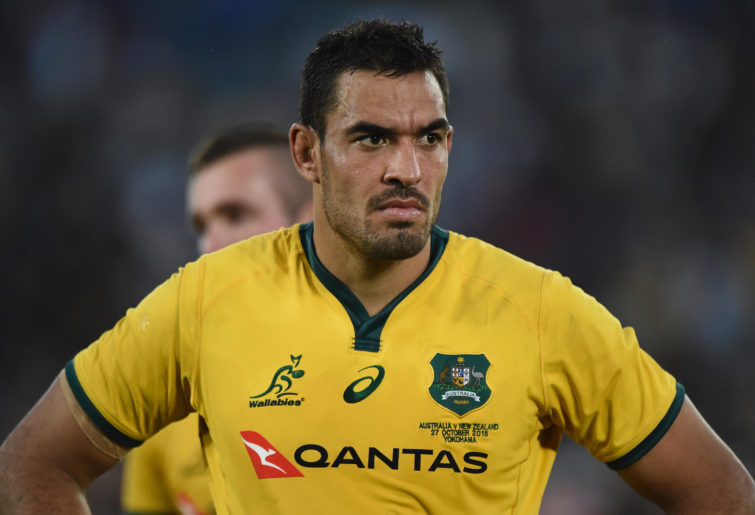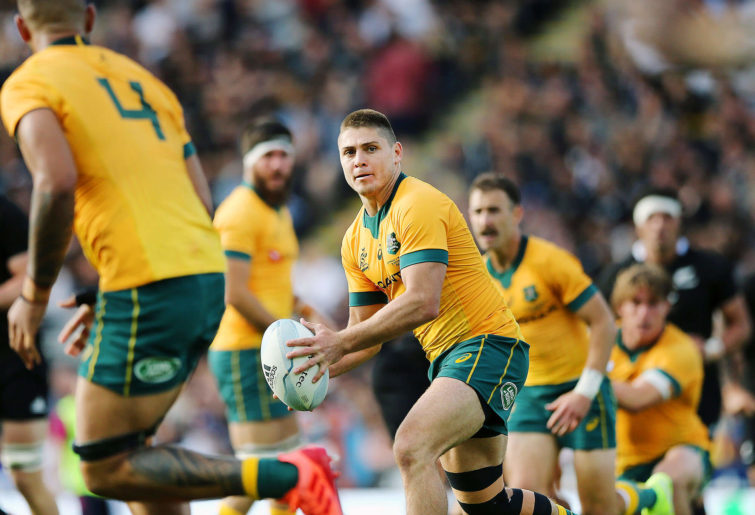Let’s just start this fine Tuesday by addressing the elephant in the room: a 2:15pm Sunday afternoon kick-off in Edinburgh does not a convenient Monday morning viewing time on the Australian east coast make.
Nope, not a fan. Not at all.
For one thing, it’s ruined my Monday routine. Mainly by needing to go into work on my normal day off and fulfil TV network needs for the ABC. It’s ruined my leisurely ‘write what comes to me’ approach. This week’s column has required a significant increase in planning (as in, it’s required ‘some’). Some of these pars were written well in advance of the game, for example.
But I’ve done this deliberately, so that I had a theme to take into the Wallabies clash with Scotland at Murrayfield, a theme that could them carry straight into the column, whenever I finally got around to starting it.
The idea was to save myself some time, essentially, and have something worth discussing, but in a way that’s logistically possible and doesn’t involve my submitting the column minutes before you start reading it on Tuesday.
Before the teams ran out in Edinburgh, I scribbled down five fairly straightforward points. Five things I needed to see from the Wallabies in this game.
The points were simply areas of the Wallabies games that has been going really well over the last little bit, but that would be suddenly under extra pressure against Scotland for two obvious reasons: they were playing in the UK for the first time in years, and the whole Japanese employment saga that blew up way more than it needed to.
All in all, the performance was… well, okay.
Like is so often the case, there were some nice passages of play from the Wallabies and the lead-up to both disallowed tries proved that they could work themselves into position to score if they played with the right amount of patience.
Sadly, their decision-making and discipline let them down all too often, with the lead-up to both disallowed tries providing the perfect example here as well.
Anyway, this is what I noted down, and this is what I needed to see.
Defensive standards needed to stay high
Over the five straight wins, the Wallabies have been defending in the mid-90 per cent range for tackle effectiveness; seriously elite areas. Several wins through The Rugby Championship and the win over Japan produced missed tackle numbers best described as ‘a handful.’ Single figures. One in every 20 attempts, or thereabouts.
Sadly, that standard slipped rather dramatically against the Scots, with the Wallabies missing 21 tackles from 104 attempts. That’s one in every five, and the problem didn’t really discriminate, with only five of the starting XV finishing with a naught in the ‘MT’ column.
It’s only for the fact Scotland conceded a third more turnovers than did Australia that they couldn’t do more damage beating that many defenders. They also made four clean breaks and got 11 offloads away. Yet, it still felt they didn’t play nearly as much rugby as the Wallabies did.
Certainly, this aspect of the Wallabies game can’t remain this low next weekend against England. The Red Rose certainly aren’t the All Blacks, but they’re capable of that level of precision on their day, and don’t really need an invite to turn turnover into attacking opportunity. Plenty to work on, then.
Set piece platform needed to remain solid
There’s no doubt the addition of Rory Arnold went a long way to shoring up the Australian lineout, and this was a good thing after the showing against Japan and also Argentina to complete The Rugby Championship.

Can the Wallabies turn it around against the Pumas? (Photo by Matt Roberts/Getty Images)
The Wallabies won all 13 of their own throws, while also putting the Scots under pressure on their throw and even stealing one for good measure.
But the scrum was a problem for pretty much all but the six minutes and change that Taniela Tupou was on the field. James Slipper was forced to switch sides twice through the match, but found trouble wherever he was, while Allan Ala’alatoa and Angus Bell both conceded penalties as well.
And again, it doesn’t take a genius to know what Eddie Jones will be telling his front row this week; ironic given his own attitude toward the front row and scrum when he was at the helm of the Wallabies back in the day.
Back row function kept clicking
The back row output was still pretty reasonable, with Rob Leota enjoying another strong showing in his third start in the last four games, and Michael Hooper typically productive wherever he was on the field, not matter what bile dump-and-run merchants choose to spew forth.
But I must admit to surprise at reading Rob Valetini only carried the ball once for not even one rounded-up metre gained; surprise, because I just never thought he hadn’t been involved in the game. He still defended well, and his breakdown presence was as consistent as it was impactful.
But then, in hindsight, perhaps this was one reason why the next aspect was well short of the mark.
Ball-carrying punch had to remain
And it just wasn’t there, was it?
The forwards collectively amounted for just over half of all Australian carries for the match, so it wasn’t for a lack of application, but just three offloads tells us that yet again the Wallabies went into their shell a bit with ball in hand.
When the Wallabies have gone through bad patches in the past, their attitude when looking to get offloads away and positioning to become an offload option has always been the measure, and this game on Monday morning was another example. Three offloads for the match is well less than half the tally from that against Japan a fortnight ago, and again through the TRC wins.
When the ball did move wider, James O’Connor seemed to be playing way too deep way too often, which meant that not only were the outside backs getting the ball well before the gain line, but that the Scottish defenders were able to consistently advance up into the Wallabies’ faces and make ground without the ball.

James O’Connor (Photo by Anthony Au-Yeung/Getty Images)
I read a description somewhere in the last 24 hours – and apologies to the author if it was on this very site! – that most of the Australian attack involved waiting for the bloke next to them to do something, and that feels pretty apt. There was a lot of waiting for someone to make an impact, but not a lot of wanting to make an impact.
Midfield plan needed to suit the personnel, not vice-versa
This was maybe the one point I was most concerned about, and I’m sure I wasn’t alone in thinking this. The obvious concern being that Hunter Paisami at inside centre would be required to play a role still designed for Samu Kerevi.
And on the plus side, the Wallabies certainly weren’t looking to attack the same way.
But it did appear that the plan was to allow Paisami to play before the line rather than right up at it, and perhaps that is why O’Connor played with as much depth as he did. It might have been by design, but I could also be giving them way too much benefit of the doubt.
There wasn’t a lot of connection with Len Ikitau, which is a road I’ve been down before, but the back three players on the whole – and Izaia Perese laid down a very strong claim to starting in Jord – Petaia’s place – found ways to get their hands on the ball more than other games in the recent past when the Wallabies have seemingly played away from the 13 channel.
All in all, the five points have produced fairly underwhelming conclusions, but that kind of fits in with what we saw from the Wallabies.
Scotland’s win is their third straight over the Wallabies, and that seems a bit funny given the first two were within six months of each other five years ago.
But that fits as well, because as much as we’ve seen the Wallabies improve in so many ways this season, we know they’re still capable of slipping back to the same old problems.






























































































